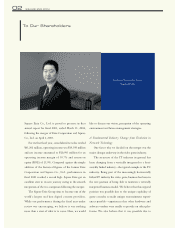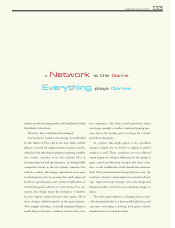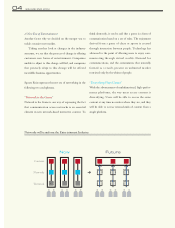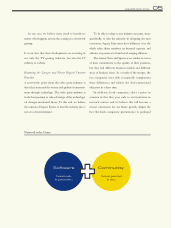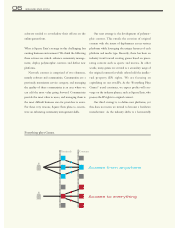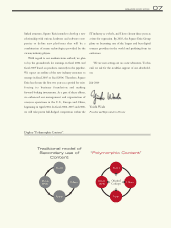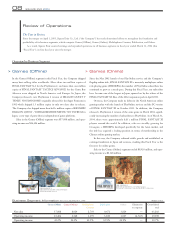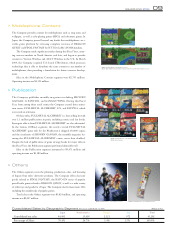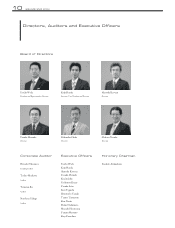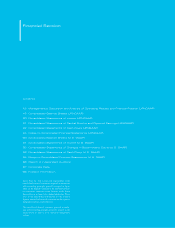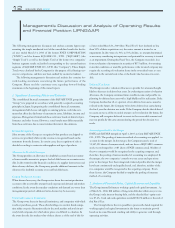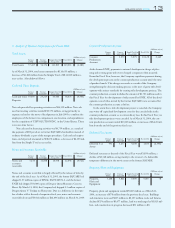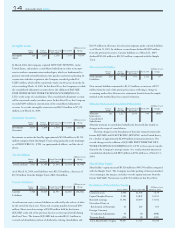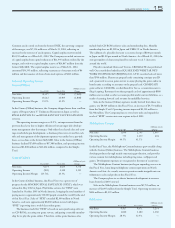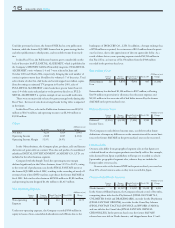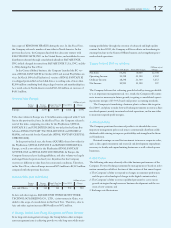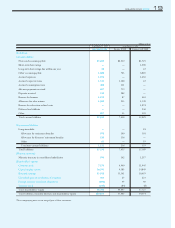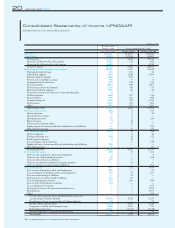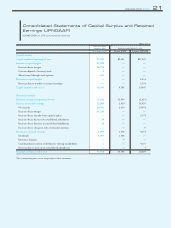Square Enix 2004 Annual Report Download - page 14
Download and view the complete annual report
Please find page 14 of the 2004 Square Enix annual report below. You can navigate through the pages in the report by either clicking on the pages listed below, or by using the keyword search tool below to find specific information within the annual report.
12 SQUARE ENIX 2004
Management’s Discussion and Analysis of Operating Results
and Financial Position (JPNGAAP)
The following management’s discussion and analysis contains figures rep-
resenting the simple unadjusted total of the consolidated results for the fis-
cal year ended March 31, 2003 of the former ENIX CORPORATION
(“ENIX”) and the former SQUARE CO., LTD. (“SQUARE”) (the
“Simple Total”) as well as the Simple Total of the former two companies’
business segment results reclassified corresponding to the current business
segments of SQUARE ENIX CO., LTD. (the “Company”). These Simple
Totals were calculated by the Company for the purpose of facilitating year-
on-year comparisons, and have not been audited by an external auditor.
The following management’s discussion and analysis also contains for-
ward-looking statements concerning the future performance of the
Company. Please read the cautionary note regarding forward-looking
statements at the beginning of this annual report.
1. Significant Accounting Policies and Estimates
The consolidated financial statements of the SQUARE ENIX group (the
“Group”) are prepared in accordance with generally accepted accounting
principles in Japan. In preparing the consolidated financial statements,
management shall choose and apply accounting policies, and make esti-
mates that affect the disclosure of amounts in assets, liabilities, income and
expenses. Management formulated these estimates based on historical per-
formance and other factors. However, actual results may differ materially
from these estimates due to uncertainties inherent in the estimates.
Revenue Recognition
Sales revenue of the Group are recognized when products are shipped or
services are provided, while royalty revenue is recognized based on the
statement from the licensee. In certain cases, the recognition of sales is
decided according to contracts with suppliers and type of products.
Allowance for Doubtful Accounts
The Group provides an allowance for doubtful accounts based on estimat-
ed irrecoverable amounts to prepare for bad debt losses on accounts receiv-
able. In the event that the financial condition of a supplier deteriorates and
their solvency declines, the Group may provide additional amounts to the
allowance for doubtful accounts or record bad debt losses.
Content Production Account
When deemed necessary, the Group writes down the content production
account to the recoverable amount based on projected demand and market
conditions. In the event that market conditions and demand are worse than
management projected, additional write-downs may be necessary.
Unrealized Losses on Investments
The Group owns shares in financial institutions, and companies with which
it sells or purchases goods. These shareholdings are stock in listed compa-
nies subject to price fluctuation risks in the stock market and stock in pri-
vately held companies for which share prices are difficult to calculate. In
the event that the fair market value of these shares as of the end of this fis-
cal year ended March 31, 2004 (this “Fiscal Year”) have declined no less
than 50% of their acquisition cost, the entire amount is treated as an
impairment. In the event of a 30% to 50% decline, an amount determined
as necessary considering its importance and potential for recovery is treated
as an impairment. During this Fiscal Year, the Company recorded a loss
from revaluation of investment in securities of ¥375 million. A worsening
in market conditions or unstable performance at the invested company may
require the recording of revaluation losses in the event that losses are not
reflected in the current book value or the book value becomes irrecover-
able.
Deferred Tax Assets
The Group records a valuation allowance to provide for amounts thought
likely to decrease in deferred tax assets. In evaluating necessity of valuation
allowance, the Company examines future taxable income and possible tax
planning for deferred tax assets with a high likelihood for realization. If the
Company decides that all or a portion of net deferred tax assets cannot be
realized in the future, the Company write down deferred tax assets during
the fiscal year the decision was made. If the Company decides that deferred
tax assets in excess of the recorded amount can be realized in the future, the
Company will recognize deferred tax assets to the recoverable amount and
increase profits by the same amount during the period the decision was
made.
Accounting method for the Merger
ENIX and SQUARE merged on April 1, 2003, to form SQUARE ENIX
CO., LTD. The pooling of interests method of accounting was applied to
account for the merger. In the merger, the Company issued a total of
51,167,293 shares of common stock, and one share of SQUARE’s common
stock was exchanged for a 0.85 share of ENIX common stock. Neither of
the two companies would be recognized as the acquiring company, and,
therefore, the pooling of interest method of accounting was employed. In
the merger, the two companies’ controls over net assets and operations
prior to the merger have been integrated, risks and profits after the merger
have been continuously and equally shared, and, therefore, neither of the
two companies would be recognized as the acquiring company. From
these factors, the Company decided to employ the pooling of interests
method of accounting.
2. Analysis of Financial Policy, Capital Resources and Liquidity
The Group internally finances working capital and capital investment.. As
of March 31, 2004, ¥18 million of long-term debt due within one year was
the Group’s only interest-bearing debt, and the shareholders’ equity ratio
was 87.4%. Cash and cash equivalents totaled ¥58,676 million at the end of
this Fiscal Year.
The Group believes that it is possible to procure the funds required for
working capital and capital investment in the future to maintain growth
based on its sound financial standing and ability to generate cash through
operating activities.


